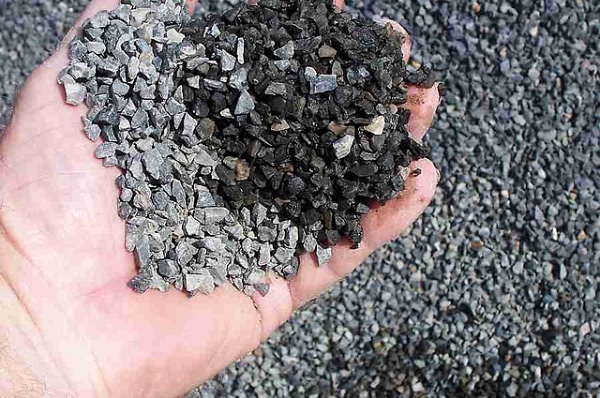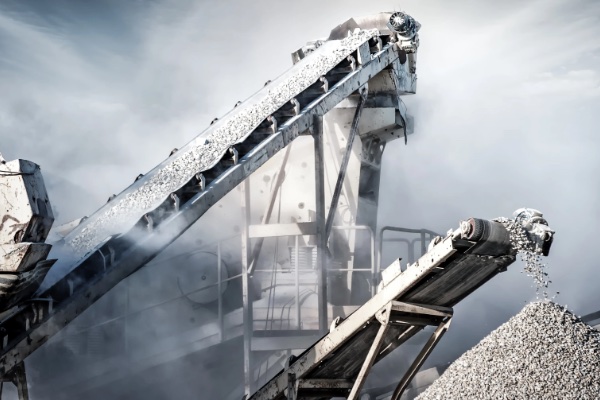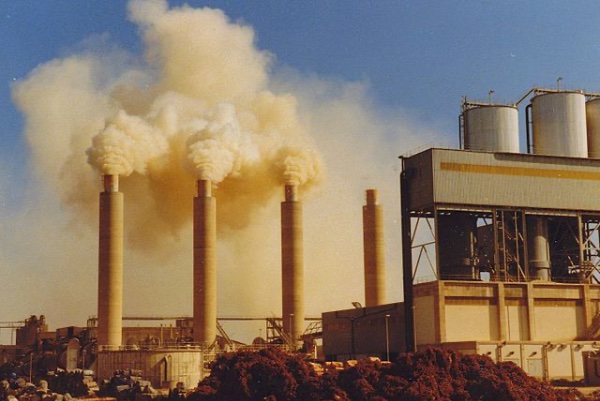FRANCESCO RODELLA | Tungsteno
Homes, offices, hospitals, stadiums, factories, bridges or roads: the versatility of concrete makes it the most widely used man-made product in the world today. But the mass production of its basic component, cement, has a great impact on the environment. According to the latest studies, this process is responsible for between 5% and 8% of global CO2 emissions. The cement industry is committed to reducing its harmful impact, with the declared objective of producing concrete without a carbon footprint by 2050. But how can this be achieved?
Cement is mainly generated from limestone. When mixed with sand or other aggregates and water, it can be used to make concrete. "In reality, its production is not one of the most polluting processes, at least if it is compared with other materials such as steel," explains Marta Palacios, a scientist at the Eduardo Torroja Construction Science Institute (CSIC). But the amount of cement that is manufactured each year is enormous—in 2015 alone, it was 615 kilograms for every inhabitant of the planet, according to data collected by the European trade association for the sector and reported by the United Nations—and the quantity is expected to grow as more and more people begin to live in urban environments, which suggests the need to study different ways of intervening so that its impact is less devastating. Although the sector estimates that it has managed to reduce the emissions linked to its production by 19% since 1990, this reality has led it to commit to decarbonisation within 30 years, a decision that is in line with the climate action mapped out by dozens of countries with the aim of slowing down global warming.

Isolating CO2 so that it can be stored, transported and recycled into useful products can be key to reducing the impact of decarbonation. Credit: Wikimedia Commons.
Fly ash, biomass and additives for non-polluting cement
In the production of concrete, 60% of emissions come from decarbonation, a process at very high temperatures that allows the basic component, called clinker, to be obtained from the raw material. The rest is the result of burning fossil fuels to power the kilns used in this phase, and other activities that involve the use of electricity.
"Among the solutions identified to reduce this carbon footprint, the one that has the greatest potential in the industry is the optimisation of thermal processes to improve the energy efficiency of the manufacturing cycle, a measure that began to be implemented in the 1970s," explains Palacios. Another route being considered is the partial replacement of polluting fuels with more sustainable alternatives such as biomass.
But where a lot of work is currently being done, adds the CSIC scientist, is in finding ways to partially replace clinker, which usually represents up to 95% of the powders that make up cement, without losing its key characteristics (strength and durability). To this end, the ideal substitutes are elements known as mineral additives, all of which are obtained without any CO2 emissions. The most commonly used are fly ash, blast furnace slag, volcanic ash, calcined clays and limestone, says Palacios.
Although it is already common for cement produced on a large scale to contain such additives, it is usual that this substitution does not exceed 20% or 30%, because above these proportions the material partially loses its strength. Researchers and companies are now studying how to replace at least 50% of the clinker by adding chemical additives that reduce the porosity of the material and help to restore its original characteristics. Among the most effective are the so-called superplasticizers, which, in addition to reducing the amount of water needed to produce concrete that maintains its fluidity, do not pollute, says Palacios.

To reduce the impact of decarbonation, it is essential to develop processes to isolate CO2 so that it can be stored and converted into useful products. Credit: Banana Republic.
Other paths towards a zero carbon footprint
Alongside these initiatives aimed at replacing polluting substances and raw materials, other proposals are being implemented that also support these strategic objectives of the sector, from sustainability to the reduction of the environmental impact. One example is that of the actions aimed at applying concrete in an increasingly optimal manner and tailored to the functionalities of what is being built, for which 3D printing, the recycling of concrete for the manufacture of related products such as asphalt, or the production of cement made from waste and without the use of clinker can also be of help. Nevertheless, in Palacios' opinion, the key to future decarbonisation will be the development of technologies for capturing and subsequently storing or reusing carbon.
These types of processes aim to isolate CO2 from the combustion gases used during the manufacturing of cement and then compress it for safe storage or recycling. In the first case, the idea is to transport it to deposits deep underground. However, a 2018 study by the UN indicated that for the time being this possibility involves significant technological challenges and is still too expensive. The cement industry, even more recently, has indicated that it is exploring how to put the second option into practice, that is, transforming and reconverting the carbon generated into useful products, either for the industry itself or for other sectors, with the aspiration of being able to create a virtuous, emission-free production cycle.
"In order to meet the target set for 2050, it is essential that carbon capture and storage techniques work, which is what will be required to complete this journey," Palacios added. The scientist believes that the cement sector is committed to achieving this decarbonisation and that, to this end, it is seeking the collaboration of researchers. This pairing could be the definitive alliance for thinking about a future where the most widely used artificial product in the world would become an example of reaching the goal of having a zero carbon footprint.
· — —
Tungsteno is a journalism laboratory to scan the essence of innovation. Devised by Materia Publicaciones Científicas for Sacyr’s blog.
